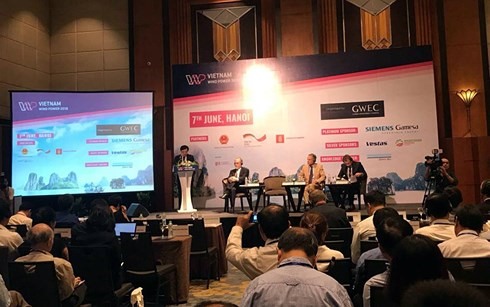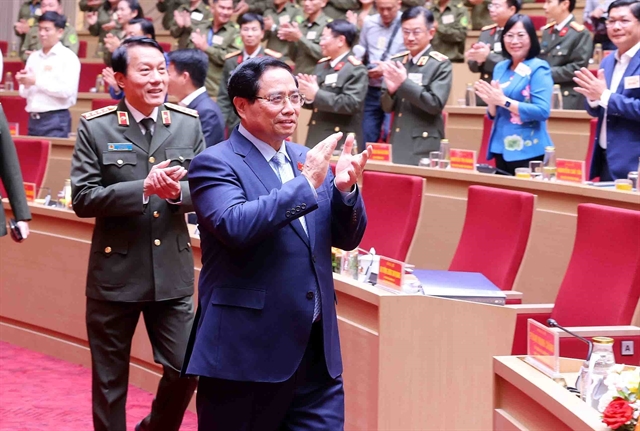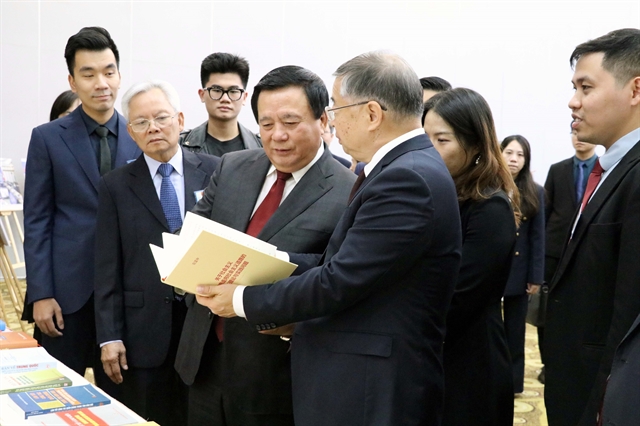 Economy
Economy

Việt Nam needs to focus on developing the wind power industry and implementing transparent policies on granting investment licences to wind power projects.
 |
| Việt Nam needs to focus on developing the wind power industry and implementing transparent policies on granting investment licences to wind power projects.— Photo vov.vn |
HÀ NỘI — Việt Nam needs to focus on developing the wind power industry and implementing transparent policies on granting investment licences to wind power projects.
Experts said at a seminar on the development of wind power in Việt Nam held in Hà Nội on June 7 by the German and Danish embassies, alongside the GIZ – German international cooperation organisation.
The seminar was a chance for Việt Nam to learn from experiences of foreign countries and international experts in the development of wind power.
During the seminar, the Global Wind Energy Council (GWEC) said that to abolish some of the major barriers and to bring into play the full potential of Việt Nam’s wind power, the Government must increase its support for the development of the industry.
Secretary General of GWEC Steve Sawyer said that the organisation intends to help Việt Nam reap the benefits of the wind power sector, which are a clean and affordable energy source for economic development, the enhancement of energy security and the development of technology.
According to GWEC, the council is ready to help create favourable conditions and to support Việt Nam in wind power development.
To develop the wind power industry, Việt Nam needs to establish a national wind power association and boost the sector to take advantages of wind resources.
According to a representative of the German Development Cooperation Agency (GIZ), Việt Nam has many problems in wind power development, including policy, technology, the cost of exploiting wind power and integration of wind power into the national grid.
In addition, Việt Nam should continue to standardise electricity trading contracts for wind power projects under international standards. The process of getting approval for such projects should be simplified to increase the confidence of investors.
According to the adjusted power plan VII, Việt Nam has set a target of reaching a wind power capacity of 800MW by 2020 and 6,000MW by 2030. However, the development of the sector is still very slow. At present, only seven projects have been put into operation, with a total capacity of 190MW.
Meanwhile, many countries in the world have developed and successfully utilised the benefits of wind power, including China and India, who are making strong progress in this area and have achieved unexpected results.
At the seminar, Nguyễn Văn Thành, deputy head of the Electricity and Renewable Energy Department under the Ministry of Industry and Trade, said there are still many difficulties that the sector is facing, such as land use, limited capital, hesitancy to approach new technology and a lack of backup power.
The selling price of wind power is currently not attractive enough for investors. The Ministry of Industry and Trade (MoIT) has been studying a suitable level of selling price in the coming time to ensure fairness between renewable energy sources, and to reflect current technology in the world, said Thành.
The ministry aims to continue receiving expertise from relevant groups, corporations and experts in the field of energy – especially renewable energy, including experiences in exploiting the potential of wind and solar energy in regions with different terrain and climate, and experiences in integrating renewable energy sources into the power grid.
The ministry is currently advising the Government in deciding a proper strategy to develop the country’s power sector to ensure energy security and to reduce negative impacts on the environment. The ministry will propose policies to encourage the development of renewable energy.
It also hopes to continue receiving support from the German Government, the Danish Government and international organisations when developing both the energy and renewable energy sectors. — VNS




.jpg)